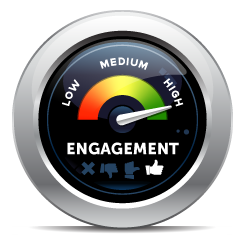Set up
I had the opportunity to reflect on an experience that I had a few years back. Here is the story. First and most importantly, this post is not an R&D bashing. As you read the story, you will see that there are plenty of opportunities for improvement by many functional team members as well as culturally throughout the commercialization process.
The Story
I had recently joined a team late in the R&D process as the marketing representative. I was not involved in collecting nor documenting the user needs or technical requirements of the product that was being developed. Not a perfect situation.
The team had completed verification testing and was moving full force into the Validation test phase of development. I asked to review the validation test protocols and was ignored for several weeks, not a good sign. Unfortunately, I had to take my request to the Vice President of Marketing and Vice President of R&D before I could get a copy of the protocol. I had to read the protocol several times before it became clear it was just enhanced verification testing, not real Validation.
I sat down with the team to share my concerns that the test protocol did not link back to user needs. After two hours of going point by point through the protocol, it became clear to all that the protocol did not Validate the user needs. I was told that Marketing did not have to approve validation test protocols, and they were going forward with the test as is.
did not Validate the user needs. I was told that Marketing did not have to approve validation test protocols, and they were going forward with the test as is.
Completely ignoring the fact that over half of the critical needs were not being challenged. Perhaps more telling was that only team members were conducting the protocols.
It was clear that there was a cultural issue that would take some time to change. The first line of my marketing ethos requires that patient safety come first, always. I had no choice but to be their advocate on the team. But how? I felt that I needed to make the Validation testing more real for the R&D team.
I took two parallel paths to solve this dilemma. First, I worked with Quality engineering and Regulatory compliance team members to better understand their role in Validation protocol development. They were eventually asked if they would like to see their roles better defined? They agreed and set up a task force to review the roles and responsibility chart in the QS for Validation testing.
Second, I arranged for five physicians and five, field-based clinical specialists to visit with the team. These five physicians had been involved in the needs identification process (almost 3-years earlier).  As near as I could tell, they provided the first and only input during the design and development process. This meeting was very structured, and the team explained why they reached the design they had.
As near as I could tell, they provided the first and only input during the design and development process. This meeting was very structured, and the team explained why they reached the design they had.
In the back of the room restricted to observation only were the functional department heads. Truthfully, I felt terrible for everyone in the room as it became apparent that the team had missed on several fronts.
After three additional months of re-design to eliminate any safety issues, verification, and validation phases were re-started. A total delay in the project launch of six months at the cost of many millions  of dollars was the result of this story. Who won in the upheaval, the patients and the clinicians won, which should have meant everyone won, that is not how the company perceived it. The finger-pointing started soon afterward.
of dollars was the result of this story. Who won in the upheaval, the patients and the clinicians won, which should have meant everyone won, that is not how the company perceived it. The finger-pointing started soon afterward.
In the end, everyone had done their best to do what they individually thought was best for the company and the  project. The entire team was made up of competent professionals. No one should have lost their job over this; it was, in essence, a complete failure to understand what the real goal of the project was, a safe, compliant, product that offered solutions to unmet needs of the physician customer.
project. The entire team was made up of competent professionals. No one should have lost their job over this; it was, in essence, a complete failure to understand what the real goal of the project was, a safe, compliant, product that offered solutions to unmet needs of the physician customer.
Marketing’s role in Validation testing
Specifically, marketing represents the customers’ voice on the team. They should be actively involved in every aspect of creating a new product. They need to facilitate access for the R&D te am to the customer in the right way at the right time. Should they be required to sign-off on the Validation protocols? I think there is room for discussion about that, however the voice of the customer needs to be heard!
am to the customer in the right way at the right time. Should they be required to sign-off on the Validation protocols? I think there is room for discussion about that, however the voice of the customer needs to be heard!
I strive to be so valuable to the team that they ask me to be involved with developing the Validation protocols.
Lesson(s)
- The clinician customers must have input throughout the development of the new product development process. This input is the only way to prevent costly surprises at the end.
- First-time marketers must have a marketing coach to take them through the process. Whether it be, the supervisor or a more experienced marketer, it is essential to know that an inexperienced marketer will not know what to look for.
- Marketing serves as the keeper of the new product vision, every chance you get, speak to the vision.
“Experience is what you get, right after you needed it most.”
Make it a great day!
Tim Walker
Tim Walker is the Principal Consultant for The Experia Group. A small consulting firm that specializes in providing experience and expertise during critical device commercialization phases to increase the probability of success.
One-on-one or team coaching is available.
www.theexperiagroup.com. Contact The Experia® Group for a free 30-minute consultation to determine if 30-years of experience can contribute to your success. [email protected].
Available on Amazon.
© 2019, The Experia Group, LLC


